|
All times refer to time zone CET
|
Klick title to show / hide detailed session description
|
08:15
A5
|

|
Opening
- Alfred Vollmer
- Editor-in-Chief
- Bodo’s Power Systems
- (No session description available yet)
|
08:30
S1
|

|
What it takes to make it real: Opportunities and challenges moving to 1500-V architectures
- Guy Moxey
- Senior Vice President, Business Development and Marketing
- Wolfspeed
- Meeting rising power needs is a known challenge for our industry. Consequently, the move to 1500-V DC bus architectures is a necessary trend to solve the need for more power in limited spaces. Pioneered by the solar industry, it is now proliferating into wind-power applications, mega-watt charging, and big battery-electric vehicles (BEVs). But is the power electronics supply chain ready to meet the growing trend? In this presentation, we will take a realistic look at the complete ecosystem needed to support the move to 1500-V applications and address the bottlenecks on this transition’s way.
|
08:45
S2
|

|
Hidden pits of SiC MOSFET benchmarking and evaluation
- Aleš Loidl
- Head of Power and Energy Application Lab
- STMicroelectronics
- Silicon Carbide (SiC) has revolutionized power converters, offering unprecedented speed, size reduction, and efficiency. Yet, the question remains: how do we select the optimal SiC MOSFET for a specific application? Traditional selection methods are reaching their limits. This presentation will delve into intriguing aspects of SiC MOSFET application benchmarking.
|
09:00
S3
|

|
Application Stability of Fast Switching Planar SiC MOSFETs
- Dr. David Sheridan
- Vice President SiC Products
- Alpha and Omega Semiconductor
- Higher efficiency is of course one of the main advantages of SiC MOSFETs, but driving with fast switching speeds can also create difficulties when high voltage transitions can interact with circuit parasitics to create unwanted application conditions. In this quick review, we will explore the different device parameters and test conditions that designers should understand in comparing SiC MOSFET for specific application conditions to avoid poor performance or worse, creating future reliability issues.
|
09:15
S4
|

|
Pushing the SiC portfolio boundaries - 400V and 3.3kV SiC MOSFETs
- Dr. Peter Friedrichs
- Fellow SiC Innovation & Industrialization
- Infineon
- More and more applications start to take benefit from the superior performance of Sic based power semiconductors. Among them one can find also numerous emerging applications, posing new requirements to power devices for efficient energy conversion. This results in more application specific product definition compared to the history of high voltage power switches. The presentation will focus on such specific new additions to the world of SiC power devices, like 400V MOSFETs for highest efficiency in AI server power supplies up to a revolutionary product for highest power ratings in the 3.3kV blocking voltage segment. S pecial focus will be put on the relevance of innovative package solutions combined with best in class chip technologies.
|
09:30
B1
|

|
Coffee Break & Tabletop Exhibition
-
-
-
- All breaks and catering, as well as the tabletop exhibition, will take place in the foyer.
The perfect spot for networking and learning about the latest products and services!
|
10:15
S5
|

|
Soft-switching for Automotive Traction Inverter Applications
- Dr. Ajay Poonjal Pai
- Director of WBG Innovation & Application Engineering
- Sanan Semiconductors
- With the increasing adoption of battery electric vehicle (BEV), there is an ever increasing focus on their driving range in order to reach an optimum cost-performance ratio. Traction inverter and motors consume over 30% of the overall electrical losses in a battery electric vehicle (BEV). Therefore, optimizing them is important. Due to their unipolar behavior, SiC Mosfets help in reducing power losses by over 50% typically compared to IGBTs. However, the high switching speeds of SiC can seldom be reaped due to system constraints, e.g., dv/dt slew rate limitation due to the motor winding insulation, leaving a significant potential untapped. This talk presents these system-dependent challenges limiting the full-utilization of SiC. An advanced inverter topology is presented which can help to overcome the classical trade-off between switching speed and dv/dt slew rate. This topology also offers soft switching, which helps to significantly reduce switching losses. As a result, an inverter system efficiency of over 99% is reached.
|
10:30
S6
|

|
GaN & SiC Technologies Enable Next-Gen AI Data Centers
- Alfred Hesener
- Senior Director Industrial and Consumer Applications
- Navitas
- Next-generation AI GPUs like NVIDIA’s Blackwell B100 and B200 each demand over 1 kW of power for high-power computation, 3x higher than traditional CPUs. These new demands are driving power-per-rack specifications from 30 to 40 kW up to 100 kW. Using GaNSafe power ICs alongside Gen-3 “Fast” SiC MOSFETs with ‘trench-assisted-planar’ technology, enables highest power densities and system efficiencies over 137 W/in3 and over 98% efficiency in AI data centers PSUs ranging from 3.2 KW to 8.5kW.
|
10:45
S7
|

|
SiC Power Packaging Unlocks Full Potential of High-Power Applications
- Dr. Ing. Tomas Krecek
- Technical Applications Engineer
- Microchip Technology
- The electrification of everything is driving the need for higher levels of power fidelity in applications such as sustainability, data centers and aerospace and defense. This presentation focuses on leveraging the latest, innovative SiC power packaging, which is crucial to unlock high system performance and enable high current, high power and efficient switching applications.
|
11:00
S8
|

|
Utilizing Physics-Based AI-Powered Digital Twins to Accelerate Design Optimization and Manufacturing Yield of SiC Power Devices
- Dr. Josef Weinbub
- Advanced R&D Program Director
- Silvaco
- SiC technology is increasingly being adopted in the EV and industrial markets, demonstrating a significant improvement in performance. However, SiC must remain cost-competitive against incumbent silicon-based technologies and meet stringent time-to-market and volume requirements at high yield. While the use of physics-based modeling (e.g., TCAD) and design simulation tools is common within device technology R&D teams, product and process engineers often rely heavily on empirical data as they productize SiC devices and bring them to manufacturing. Silvaco aims to unify these efforts through its Fab Technology Co-Optimization™ (FTCO) platform. With FTCO, experimental data and physical simulation data are used in tandem for realizing a calibrated and iterative AI-powered nonlinear modeling flow to generate a digital twin. The ultimate goal of integrating the FTCO platform into an organization is to develop and deploy such a physics-based digital twin representative of the fab. A digital twin allows for interactive structure modeling and virtual experimentation, shortens learning cycles and is user-friendly, enabling engineers not traditionally using physics-based simulation tools to benefit from the insights provided.
|
11:15
S9
|

|
50% more power from SiC chips in high performance ceramic-isolated discrete packages
- Francois Perraud
- Sr. Manager, Product Management - Discrete MOSFET, SI and SIC Products
- Littelfuse
- Isolated discrete packages using high performance ceramics significantly enhance the thermal performance of power conversion designs and simplify the assembly steps in production. SiC MOSFETs can remain more than 50°C cooler, or the system power output increased by more than 45% as compared to systems built using standard non-isolated discrete components, while eliminating the need for external isolation foils.
|
11:30
S10
|
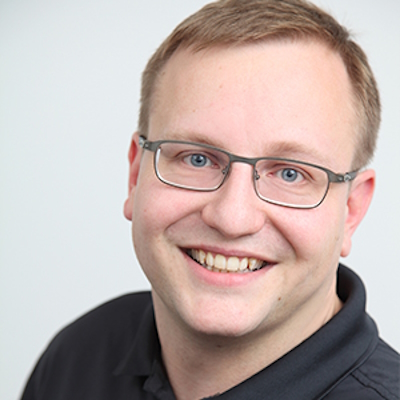
|
Enhanced laser annealing for ohmic contact formation for SiC power devices
- Maurice Clair
- Team Leader Technology and Innovation Management
- 3D-Micromac
- The evolution of silicon carbide (SiC) power devices has driven demand for advanced manufacturing techniques that enhance device performance and efficiency. A critical stage in this process is Ohmic Contact Formation (OCF), which establishes reliable ohmic contacts on SiC materials, enabling efficient current flow. Traditional rapid thermal processing (RTP) methods for OCF now face limitations as SiC devices become thinner and more complex. This presentation will explore the advantages of laser-based thermal annealing as an alternative to RTP for OCF, highlighting how laser technology meets the unique demands of SiC-based power device fabrication and pave the way for more efficient, reliable electronics in high-performance applications. The presentation will focus on the precision, repeatability, and high throughput achievable through laser annealing systems like 3D-Micromac’s microPRO XS OCF, which supports consistent device quality. It will show which role sophisticated process routines and an optimized chamber layout play in reducing particle generation and how individual adjustable laser spot profiles enable the processing of different material compositions.
|
11:45
B2
|

|
Lunch Break & Tabletop Exhibition
-
-
-
- All breaks and catering, as well as the tabletop exhibition, will take place in the foyer.
The perfect spot for networking and learning about the latest products and services!
|
13:30
S11
|
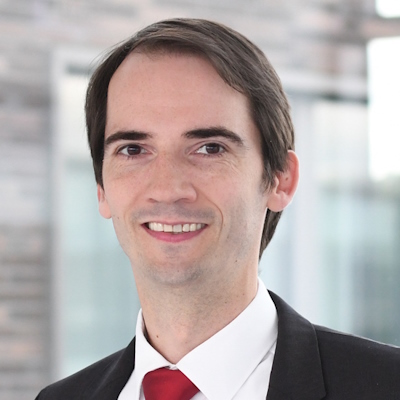
|
For Reliable and Competitive SiC Power Converters
- Dr. Nils Soltau
- Deputy Manager, Technical Marketing High Power
- Mitsubishi Electric
- Still today, reliability and applicability of SiC devices is widely discussed. Issues like bipolar degradation and threshold-voltage shift are causing uncertainty among some developers. In the meantime, however, some of our customers have decades of field experience using our SiC power modules. They and their customers enjoy the low losses and high switching frequencies enabled by SiC power semiconductors. This presentation is about how Mitsubishi Electric, with its expertise in SiC-device development, contributes to reliable and competitive SiC power converters.
|
13:45
S12
|
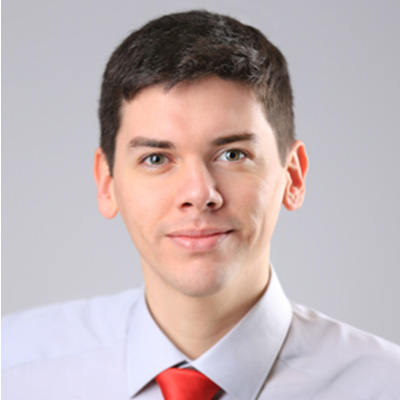
|
Powering the Future: Harnessing 2kV SiC for a Decentralized Grid
- Emiliano Meza
- Senior Product Marketing Manager
- Semikron Danfoss
- The power grid is becoming increasingly decentralized with the integration of solar, energy storage systems, and EV charging infrastructure. 2kV silicon carbide is a key technology for interfacing these various resources. In this presentation we will highlight power modules equipped with 2kV SiC MOSFETs and how they are applied to applications from 100kW to 1MW. As a chip-independent manufacturer, Semikron Danfoss offers state-of-the-art packaging solutions that optimize performance and reliability. This positions us as a leader in the green transition towards a more integrated and resilient energy future.
|
14:00
S13
|

|
SiC solutions for EV applications
- Imane Fouaide
- Application Marketing Manager
- ROHM Semiconductor
- Today, SiC technology is used widely on EV applications, specially for OBC and traction inverter. Since several solutions are existing in the market, packaging is a pivot topic on how to compromise between scalability and solution cost. The presentation revolves around ROHM’s vision on package technologies, and market analysis for EV market.
|
14:15
S14
|
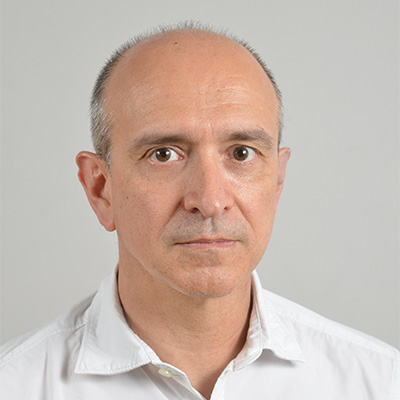
|
Accurate SiC Simulation in SPICE and PLECS
- Dr. Didier Balocco
- Technical Marketing Engineer
- onsemi
- SiC is still a relative new material. Every new generation brings more performances to improve system or application efficiency. But, to compare or evaluate the advantage to move on, designer need tools to compare at system level the benefits. SPICE, invented in the 70’s, doesn’t know SiC material and specific characteristics. onsemi build all SiC physical equations to describe SiC operation and implement then in SPICE. With such powerful SPICE models, accurate simulation results can be obtained. For every designer, losses are the focus. As we will see in this session, onsemi SPICE models can predict then if the environment is also modeled. The drawback of SPICE is the simulation time need for big system. PLECS overcomes this by using a state change technic and models including precalculated losses. As it will be demonstrated in the previous section on SPICE, system losses don’t depend only on active devices. There are interactions between active and passive devices, influencing each other’s. For this, onsemi bring a new tool : the “Self-Service PLECS Model Generator” in complement with the “Elite Power Simulator” tool, a system simulation platform based on PLECS. The model generator objective is to predict accurately the losses by including in the PLECS models the system environment and interactions between each design specific passive and active parts. The second section will show examples and comparisons between SPICE results and PLECS results. It will prove the superior accuracy of using the model generator to predict system losses.
|
14:30
S15
|

|
2nd Generation 1200 V SiC MOSFET: Robust against Radiation and Better in RDS,on
- Hadiuzzaman Syed
- Developer- Power Semiconductor (Silicon Carbide) / Power Module
- Bosch
- One of the concerns regarding the reliability of SiC based power modules in an EV inverter is its resilience to terrestrial neutron radiation. As the battery voltage of the EV is increasing, the probability of a neutron induced catastrophic failure (SEB) of the SiC based switches is also increasing. A terrestrial radiation rugged SiC switch traditionally employs higher breakdown voltage, increasing the device on state resistance (RDS,on). Bosch 2nd Generation 1200 V SiC MOSFETs employ a two degree optimization technique in the device design that improves radiation ruggedness without affecting the device RDS,on. The presentation will discuss the experimental results of the Generation 1 and 2 devices and the resulting FIT rate based on an EV mission profile. The Generation 2 devices enable the power module to achieve below 1PPM failure rate related to the neutron radiation and 20 percent reduction of the on-state resistance compared to Generation 1.
|
14:45
B3
|

|
Coffee Break & Tabletop Exhibition
-
-
-
- All breaks and catering, as well as the tabletop exhibition, will take place in the foyer.
The perfect spot for networking and learning about the latest products and services!
|
15:30
S16
|

|
Use cases of SiC Technology in industrial Applications
- David Chilachava
- Technical Marketing Manager
- Vincotech
- With the global goals of reducing the carbon footprint and achieving sustainable energy growth, SiC technology with its superior properties plays a pivotal role. The huge investments and expansions in SiC capacities, driven mainly by e-mobility and cost optimization, make it more and more attractive for various industrial applications. This presentation explores the benefits of selected SiC use cases, such are hybrid inverters for renewable energy systems and energy storage systems, charging infrastructures for electric vehicles, data centers for AI and cryptocurrencies and motor drive applications.
|
15:45
S17
|

|
SiC MOSFET with high temperature stability
- Dr. Georgio El-Zammar
- SiC Senior Development Engineer
- Nexperia
- Silicon carbide (SiC) MOSFETs are typically characterized by their RDS(on) values measured at 25°C, with this temperature reflected in device naming conventions. However, in real-world applications, these MOSFETs often operate at higher temperatures due to power losses, leading to an increase in RDS(on). The rise in RDS(on) with temperature can significantly affect the overall efficiency of the application. Therefore, understanding and ensuring the temperature stability of RDS(on) is crucial for optimizing performance. This presentation will explore the impact of RDS(on) temperature stability on application efficiency and why it is a critical factor in power electronics.
|
16:00
S18
|

|
Challenges of measuring high-voltage Wide Bandgap devices
- Dr. Alexander Küllmer
- Application Engineer Oscilloscopes
- Rohde & Schwarz
- Explore the cutting-edge challenges of measuring high-voltage Wide Bandgap (WBG) devices in this concise short presentation. We will address critical issues engineers are facing in fast-switching WBG applications, including offset voltages, noise and thermal drift, and common-mode voltage derating. We will examine traditional isolation methods and introduce optical isolation as a breakthrough solution for high-frequency WBG testing, especially on wideband current sensing approach. Discover how a dedicated front-end amplifier can revolutionize measurement accuracy, mitigating thermal drift and voltage spikes for superior performance in high-frequency WBG testing. This session offers practical insights for engineers and professionals working with high-voltage and high isolating environments, equipping them with innovative strategies for measurement integrity in the rapidly evolving field of WBG technology. Join us to stay ahead in the power electronics revolution and optimize your power electronics measurement techniques.
|
16:15
S19
|
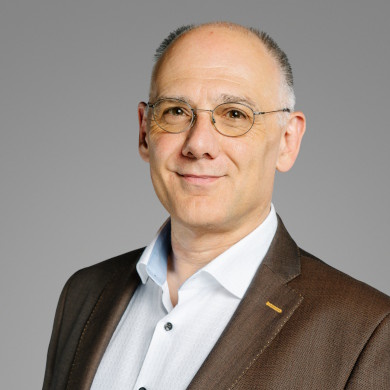
|
SiC Inverter Control Modules & Reference Designs: How to increase efficiency and accelerate time to market
- Mike Sandyck
- Marketing Director
- CISSOID
- Harnessing the full potential of Silicon Carbide can be daunting. Our inverter control modules and reference designs bring proven and completely customizable solutions from the lab over in-vehicle prototyping and on into production series. A state-of-the-art processor and innovative software offer solutions to maximize efficiency and reduce harmonic distortion.
|
16:30
S20
|

|
SiC MOSFET 750 V Generation 2: enhancing bidirectional charging of electric vehicles and boosting their performance
- Mario Zotes
- Director Product Marketing – High Voltage
- Infineon
- Bidirectional charging is widely considered for new vehicle architectures, significantly impacting new on-board charger designs. On the one hand, new use cases such as V2L, V2H, and V2G are picking up, while on the other hand, the charging requirements for electric vehicles are becoming increasingly stringent to fulfill the needs of new vehicle architectures. In this session, we will review how the transition to bidirectional charging has significantly accelerated the adoption of Silicon-Carbide MOSFETs and how Infineon is paving the way for new charging architectures with our upcoming CoolSiC™ MOSFET 750 V based on the Generation 2 technology.
|